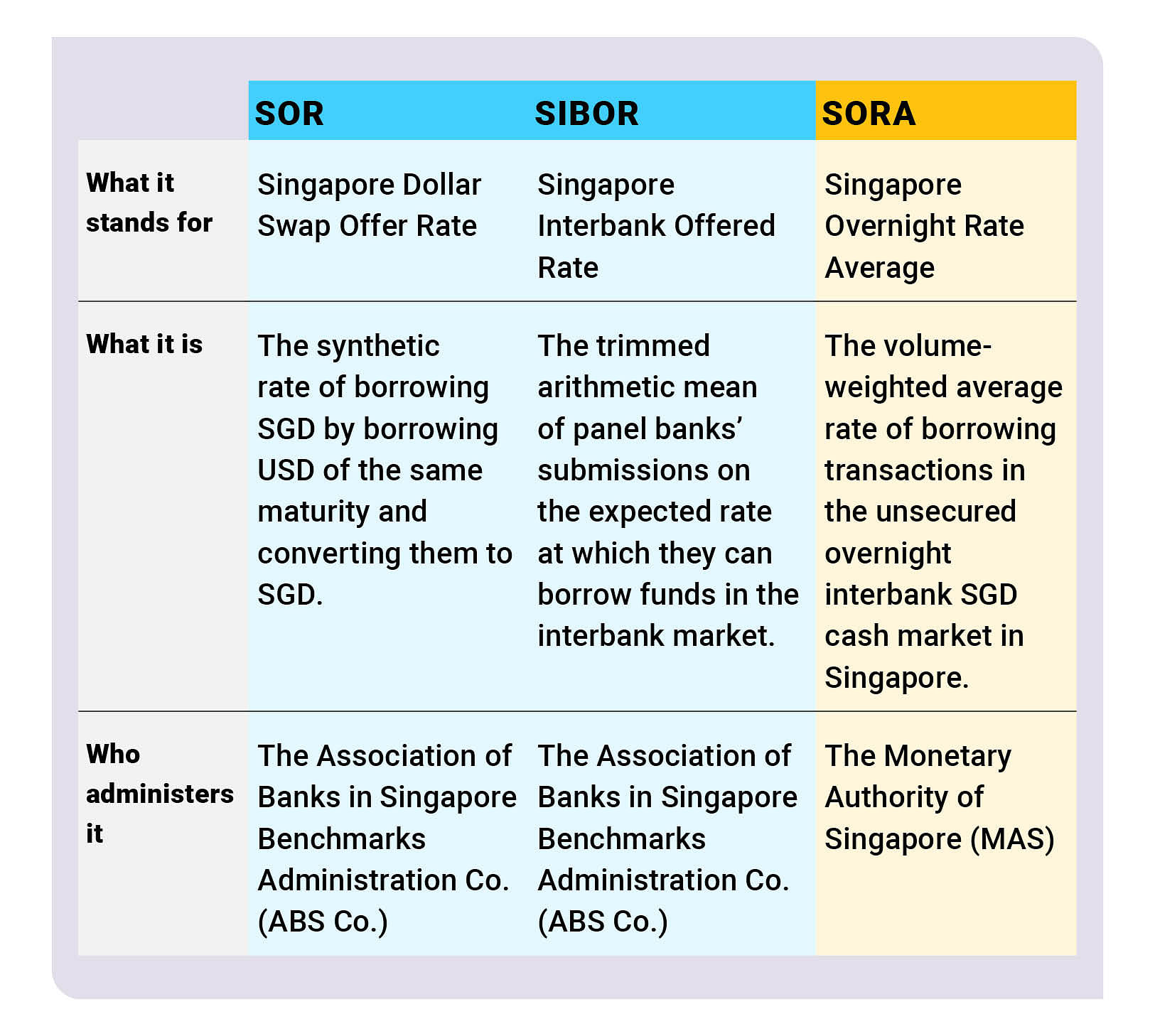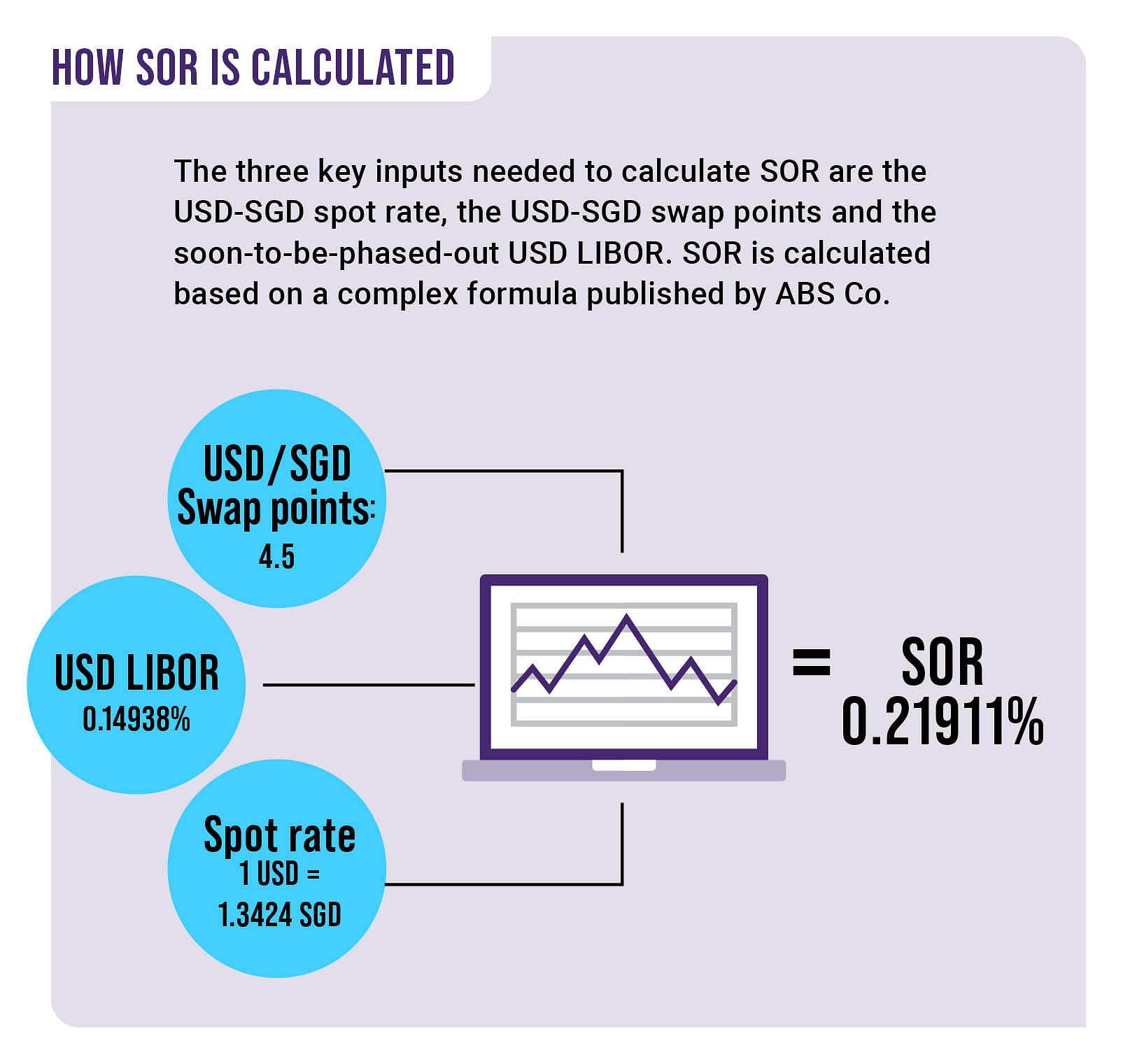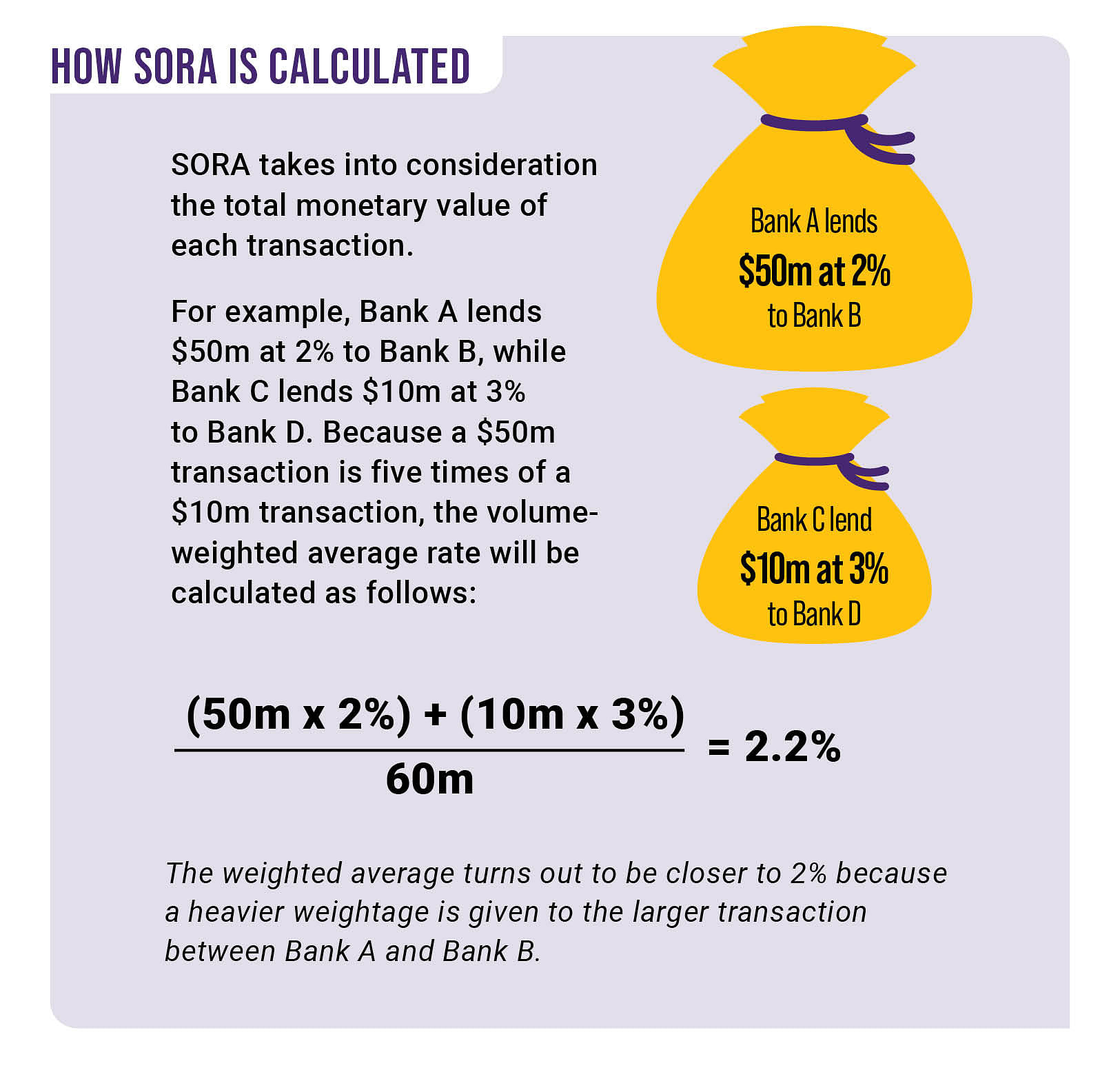BRANDED CONTENT
What you need to know about SORA, the new interest rate benchmark in Singapore
In line with global interest rate benchmark reform, the Singapore banking industry will move towards SORA, as SOR and SIBOR are phased out

SORA, which is administered by MAS, will become the main interest rate benchmark in Singapore’s financial markets moving forward. PHOTO: GETTY IMAGES
Follow topic:
In the next three years, thousands of floating-rate property loans worth billions of dollars will have to be switched to a new loan package.
This is because they are based on two legacy interest rate benchmarks, the Singapore Dollar Swap Offer Rate (SOR) and the Singapore Interbank Offered Rate (SIBOR), which are both being phased out.
Banks in Singapore have begun the process of converting all existing SOR-based property loans. They plan to complete this process by October 31, 2022, in preparation for the discontinuation of SOR after June 30, 2023. Borrowers with loans pegged to SIBOR will similarly need to convert their loans in due course, as the key SIBOR reference rates will be discontinued after December 31, 2024.
Moving forward, the Singapore Overnight Rate Average (SORA), administered by the Monetary Authority of Singapore (MAS), will become the main interest rate benchmark in Singapore financial markets. As of April 30, 2021, S$4.2 billion1 worth of SORA-pegged retail and institutional loans have been issued and adoption is expected to accelerate in the coming months.
What are SOR and SIBOR?
SOR and SIBOR have served as the main benchmarks for floating-rate loans in Singapore over the past 20 to 30 years. Both rates are administered by The Association of Banks in Singapore Benchmarks Administration Co. (ABS Co.).
SOR, which is used mainly in commercial loans, represents the effective cost of borrowing Singapore dollars (SGD) synthetically, by borrowing US dollars (USD) and converting them to SGD through the foreign exchange market. As SOR uses the USD London Interbank Offer Rate (LIBOR) in its computation, it will be discontinued after June 30, 2023 together with USD LIBOR.
SIBOR represents the average cost a bank expects to pay another bank in order to borrow SGD. It is calculated based on daily submissions by a panel of contributor banks, and may not always be fully backed by transactions.
As such, in line with global reforms to improve the robustness and integrity of financial benchmarks, the Steering Committee for SOR & SIBOR Transition to SORA (SC-STS), an industry-led steering committee established by MAS, assessed that it would be appropriate to move away from SOR and SIBOR, towards SORA.
Since May 1, 2021, banks have ceased using SOR in new loans and securities maturing after end-2021. Banks will also stop using SIBOR in new loans from October 1, 2021.
To help existing retail borrowers to switch out of their SOR-based loans, banks will offer these borrowers a SORA Conversion Package that is designed to minimise differences in interest payments at the point of conversion.
Besides the SORA Conversion Package, borrowers can also choose to convert their SOR-based loans to either fixed-rate loans or loans pegged to other reference points such as the interest paid on fixed deposits.
Mrs Ong-Ang Ai Boon, director of ABS, says: "Banks have been preparing over the last two years to ensure a smooth transition of the interest rate benchmarks from SOR to SORA for all customers. We trust that it will be a seamless switch over to SORA for most customers."
What does the discontinuation of SOR/SIBOR mean for homeowners?
Those on SOR-based and SIBOR-based home loans will have to convert to alternative reference rates.
Borrowers on SOR-based loans should consider switching to the SORA Conversion Package or other prevailing property loan packages offered by their bank, including fixed-rate loans or loans pegged to other reference points such as fixed deposit rates or board rates.
As SIBOR will be discontinued later, banks will inform borrowers on SIBOR-based loans of their options at a later date.
Global reforms of interest rate benchmarks
Regulators and banks in major economies are also moving towards alternative interest rate benchmarks that are similar to SORA.
In the US, banks will transition from using USD LIBOR to the Secured Overnight Financing Rate (SOFR), which is based on transactions in the overnight repurchase agreement (repo) market. In the UK, banks will transition from using Sterling (GBP) LIBOR to the Sterling Overnight Index Average (SONIA), which is based on transactions in the sterling overnight market.
What is SORA?
SORA, which has been administered by MAS since 2005, is the volume-weighted average borrowing rate in Singapore's unsecured overnight interbank cash market. Unlike SIBOR, which is based on estimates from Singapore banks, SORA is based on transaction data.
"SORA is a reliable, robust and transparent rate as it is fully backed by overnight interbank cash market transactions," adds Mrs Ong-Ang.
Interest payments based on compounded SORA rates tend to be less volatile, because the calculation is based on interest rates over a period of time. As banks' SORA-based loan packages typically use such compounded SORA rates, customers will benefit from more stable and predictable loan servicing costs from month to month. In contrast, loans based on SIBOR and SOR are determined by rates on a single day and could be exposed to abrupt changes if the rates on that particular day fluctuated.
Mrs Ong-Ang says:"Interest rate benchmarks provide good reference to set the cost of credit and price products, among others. SORA is a robust rate that customers can trust and rely on."
Click here to learn more about SORA and get the latest updates on Singapore's interest rate benchmarks.
Timeline of events
2019: The ABS and the Singapore Foreign Exchange Market Committee recommended SORA as the most suitable benchmark to replace SOR. MAS established the SC-STS.
2020: MAS announced several initiatives to support the adoption of SORA, and banks started offering housing loans pegged to SORA.
Apr 30, 2021: Banks ceased usage of SOR in new loans and securities.
Sept 30, 2021: Banks to cease usage of SIBOR in new contracts and SOR in new derivatives (with exceptions).
Oct 31, 2022: Banks to convert all SOR-based property loans to alternative packages.
Dec 31, 2022: All other SOR contracts to be converted to SORA, or to include robust contractual fallbacks.
June 30, 2023: Discontinuation of SOR.
Dec 31, 2024: Discontinuation of SIBOR.
What are SOR, SIBOR and SORA, and how are they different?





Glossary of terms
Term risk: The additional payment to compensate for uncertainty over how interest rates may move over a future period of time.
Credit risk: The additional payment to compensate for default risk faced by the bank.
Adjustment Spread (Retail): An addition to the applicable interest rate that reflects the average difference between SOR and SORA over the past three months.
LIBOR: The rate that banks on the London interbank market expect to pay to borrow from another bank. LIBOR has been a key benchmark for loans worldwide since the mid-1980s. Its reputation has been tarnished by past scandals of manipulation.
Spot rate: The price for a product that will be traded immediately.
Forward rate: The contracted price for a transaction that will be completed at an agreed-upon date in the future.
Swap points: The difference between the forward rate and spot rate.
The figures used in these charts and examples are simplified and meant for illustrative purposes only.
Source: ABS
This is the first of a four-part series on Singapore's transition to SORA, the new interest rate benchmark in Singapore.


